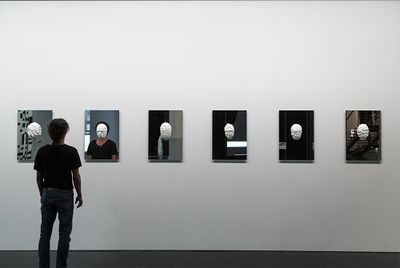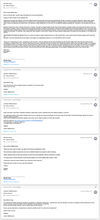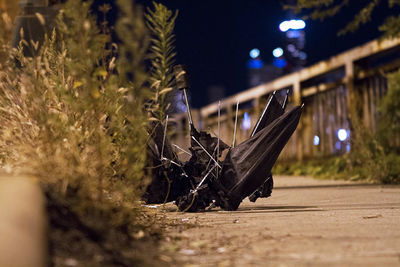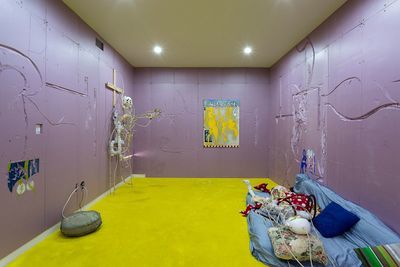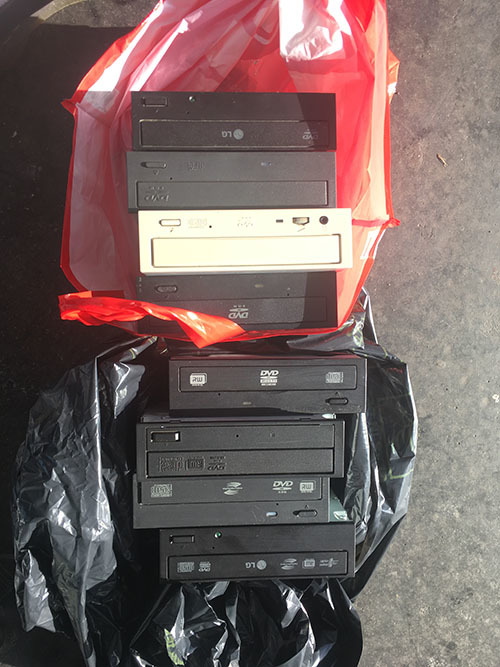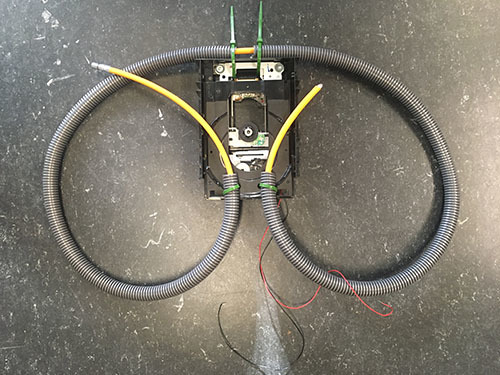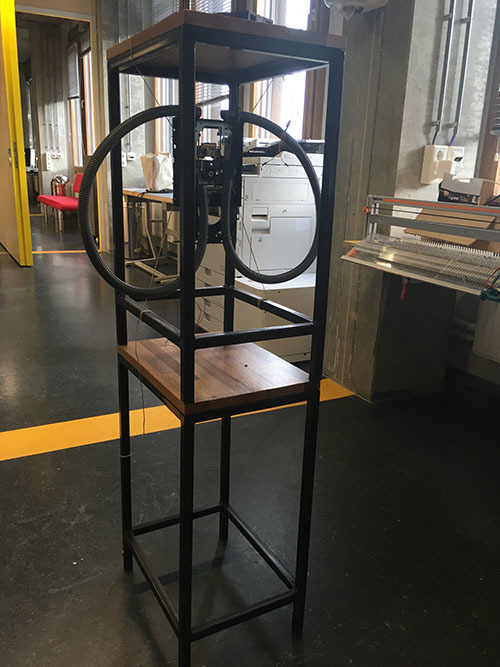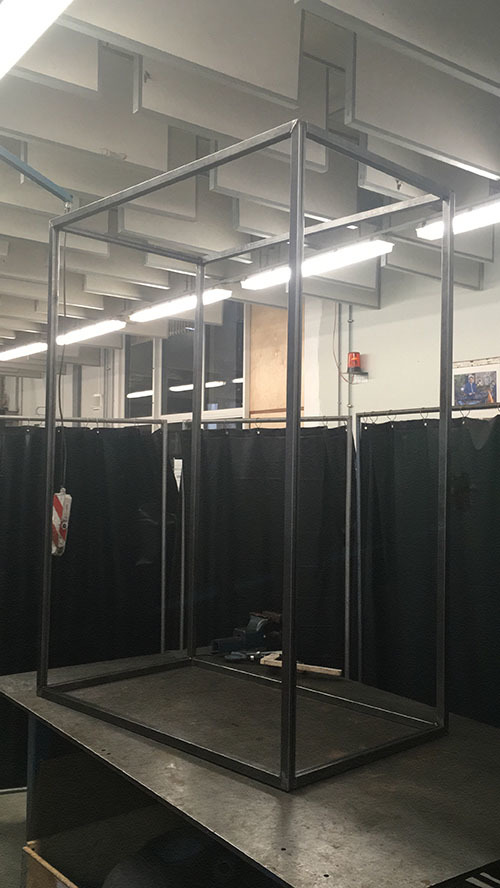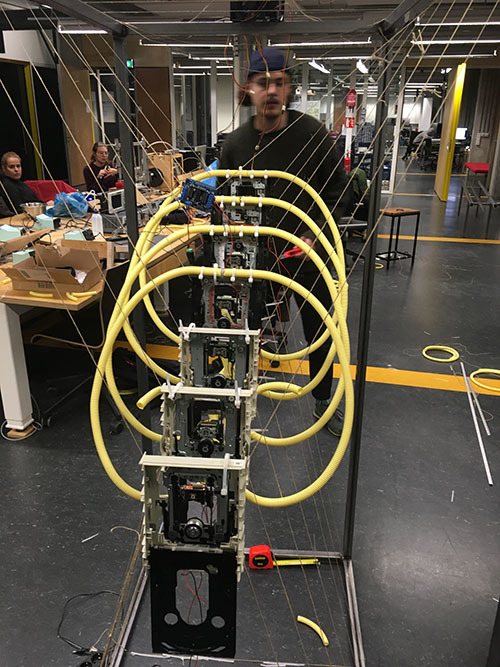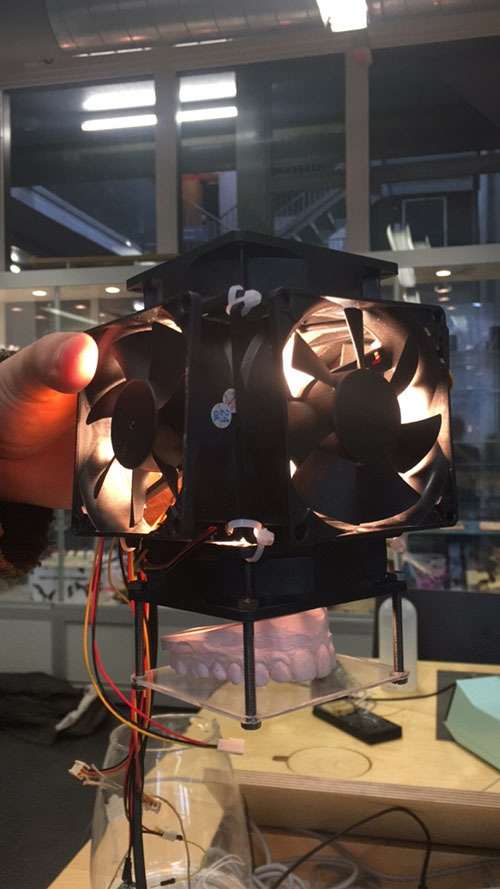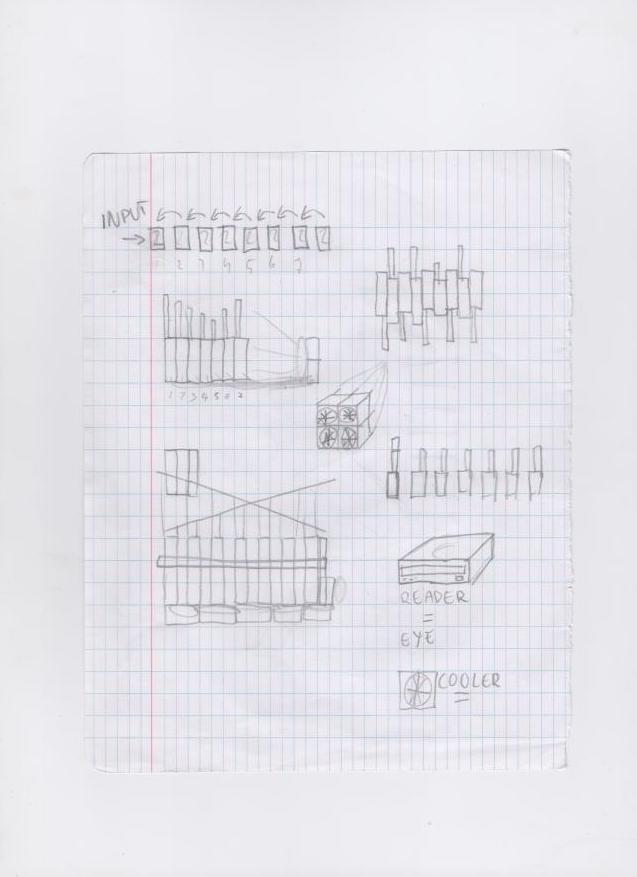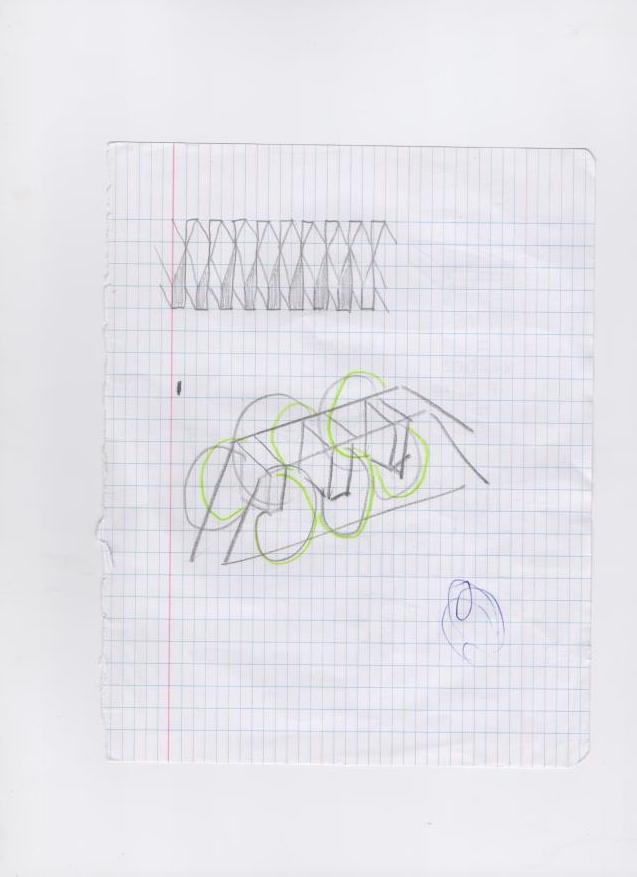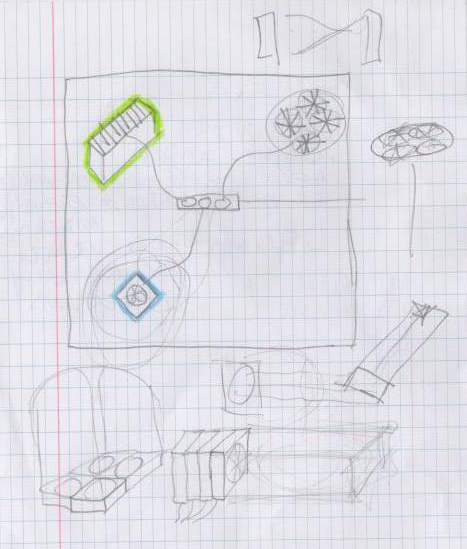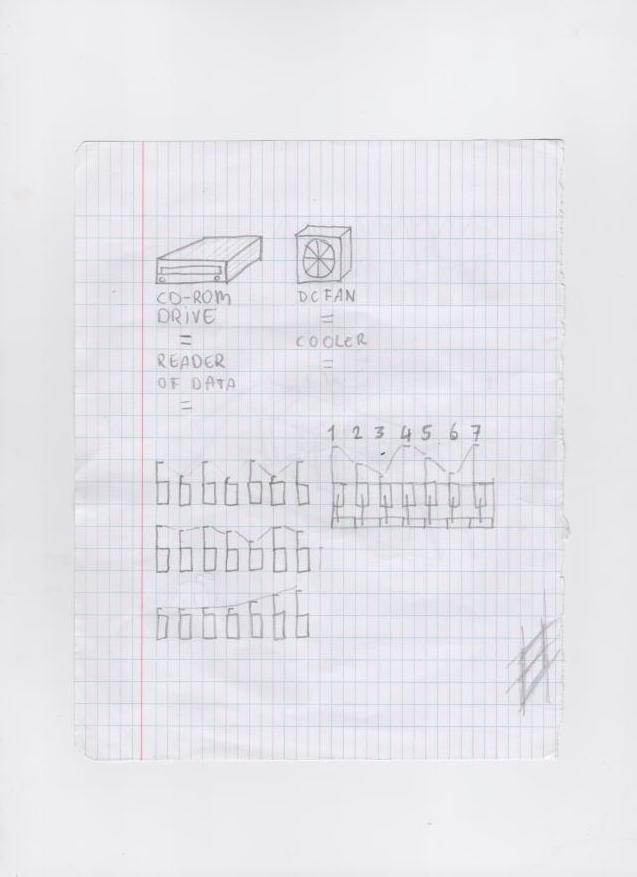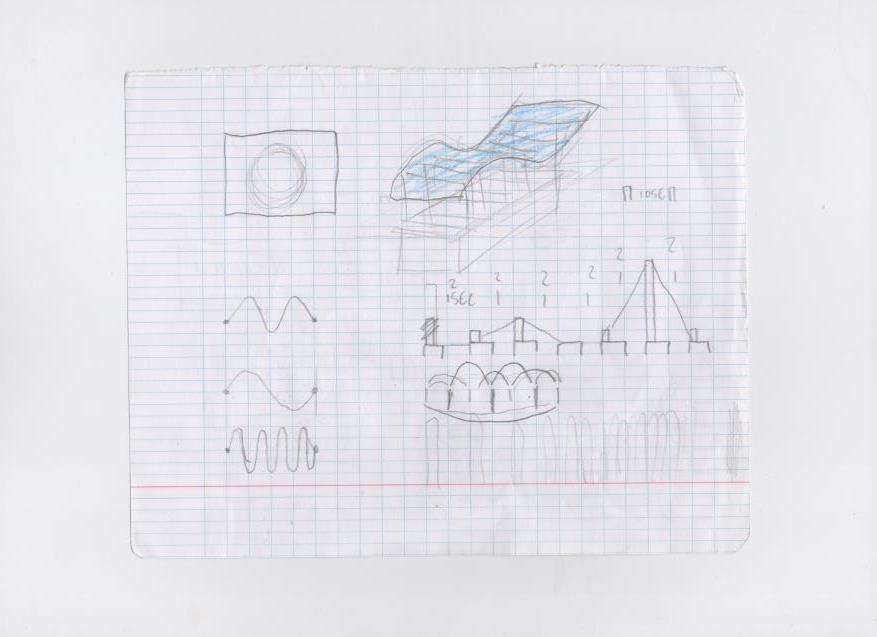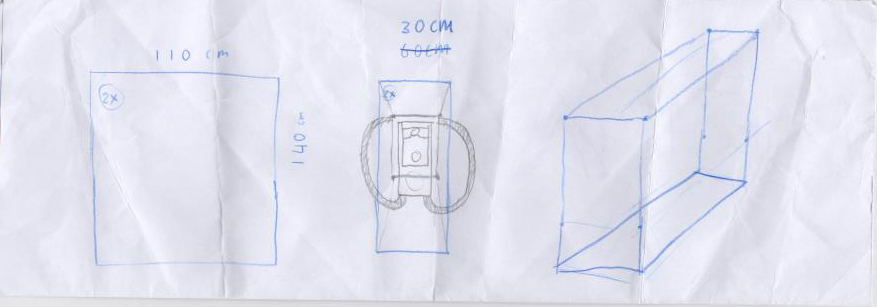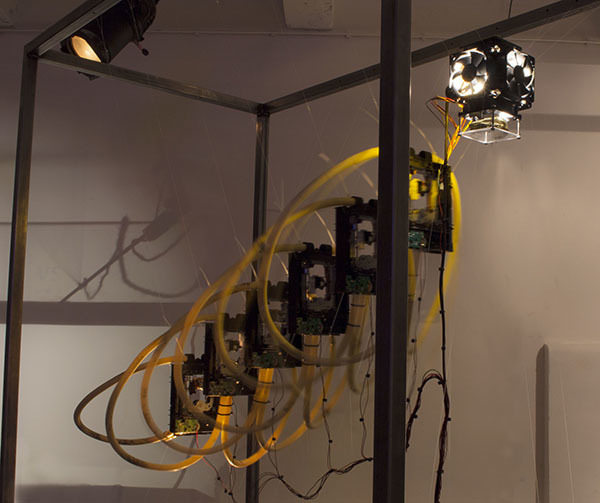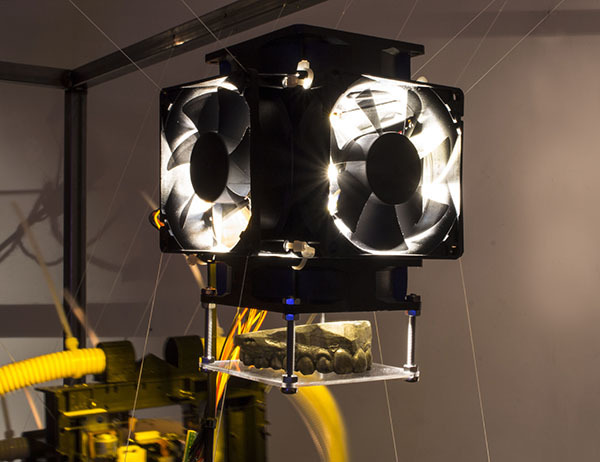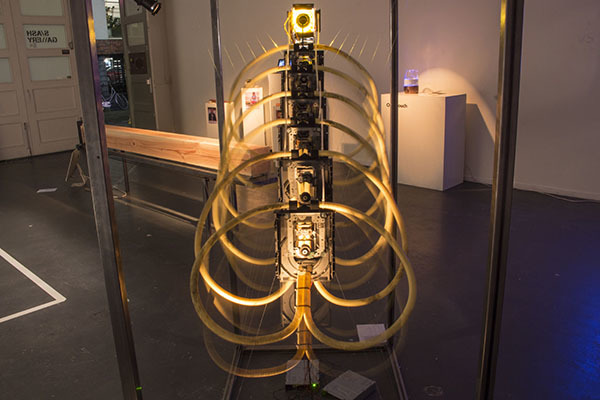Research document
Contents
Forward/Introduction
As a graphic design student, I think digital craft is good to combine with my other practices. In a way I see digital craft as a really big theme were I can explore different smaller themes. This minor relies on a certain workflow and way of thinking that fits right in how I like to work. My way of working/thinking is really hands on. I start with a theme/core idea. I only get more ideas by building, sketching, disassemble and sculpting with materials. I always begin with a big chaotic frameless field where I can play and think. When I have enough I start to filter out the best things that connects with the core idea. This last minor quarter was in the first place an opportunity to create something that I have never done before. Also it should be something with a theme that is very interesting to explore. This theme should have a lot of perspectives to explore.
Abstract
We started our project/research with the core question; What is the influence of the embodiment for artificial intelligence? To answer this question we should ask ourselves, what should this AI do? Our interest came down to the idea that AI should feel emotion and exactly understands what he is doing. From our material research and archive we got a little bit obsessed with dvd drives. They generate a perfect movement that we can use and develop in another form. At that point we didn’t know what this movement should mean or trigger. At that point we started to look at a lot of different organisms like caterpillars, worms, snakes, plankton and also an unknown creature Hallucigenia Sparsa. We decided that we should create a kind of living robotic entity that is discovering his own embodiment. This also could be a future vision that is abject and obscure. Also this entity should feel like it’s alive and exhausted of being alive. This will come up to the questions; why is it here? what is his history? All these questions will be solved in a specific scenario that’s near this entity.
Central Question
If we present future digital lifeforms as entities that follow their own evolutionary path and who's thoughts are beyond our control, will it change the way we look at the development of AI today?
Relevance of the Topic
The digital revolution is still in full swing and computer technology is evolving at an exponential rate. As computer intelligence is developing and we're nearing true artificial lifeforms, the urgency rises to pose questions about their perception of us, as it becomes just as relevant as our perception of them. And as we ourselves delve deeper into the digital realm, it is important to understand what we leave behind.
Hypothesis
The idea is that we create an entity that we do not actually show, the sculpture presented is an image inside the mind of our entity. The true nature of the entity itself will remain a mystery to the observer, but it is trying to make sense of itself and the world it resides in. It is a resident post singularity (and perhaps dystopian or even post-apocalyptic) future. It is a post-human life form that we, as contemporary humans can’t understand. Only our current knowledge can make a guess what this entity is and does. This creature in it's imagination is locked up in its framework and kept alive by electricity. This sculpture should raise questions like; what if robots or machines can create their own consciousness? Is it aware of its own embodiment? This sculpture should in the first place draw attention and be confounding. We want it to be hard to interpret literally but communicate this existential dread we feel when reflecting on such a future.
Research Approach
We started our research by experimenting with different materials that generate movement. We started from our own material archive and we found out that dvd drives had a perfect movement to do something with. We saw a lot of potentials in this material. It is an old technology that’s almost extinct, but like the floppy disc, it's functionality is still widely recognized. This in mind we decided to create a lot of compositions and started to think what it should do, what it can be. We used our imagination to think further and started to draw a lot of possibilities what it could be. Beside that, we also started researching on internet and looking for artists, makers, and scientists who are working with kinetic sculptures, artificial intelligence and robotics. You can see our research results by Key References and literature. We also read a lot of articles about AI, hard sience fiction, neural networks and how to implement in certain projects.
Key References
Sterlin Crispin - Data Masks (2013 - 2015) This technological approach to show how computers sees us is a very smart and interesting way to show how much distance there is between human and machine. These masks looks alienating to us. For a computer is this reality, so in this stage, a computer would never get on a human level.
Mark Leckey - GreenScreenRefrigeratorAction (2010)
In this piece of art he used a samsung smart fridge and made a green screen set up. This video of the installation inspired me and made me thing about objects that become a living thing. As if this fridge is alive and has a consciousness. Also to use an ordinary object as a fridge, but then a ‘smart’ fridge made me think. If this fridge is so smart, why doesn’t it think for itself?
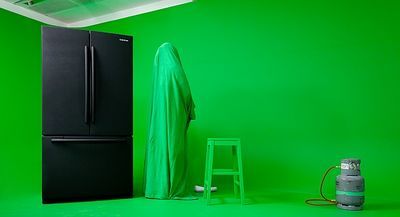
Wonbin Yang - Umbra Infractus (2012)
This piece of art was very funny because I used to take pictures of broken umbrella’s on the street all the time. Wonbin Yang makes a lot of this discarded creatures that are living on the streets. I mailed him if he used any electronics because I didn’t know for sure if it was the wind or a mechanism that makes it move.
Renaud Jerez - Home (2015) The sculptures by Renaud Jerez has a lot to do with existence of robotics nowadays. He shows an abject, sad and violent side of this kind of entities. Some of them have broken legs and a lot of them are just decrepit. This dramatic and apocalyptic view reflects to a future where these kind of entities rule. This translation into a sculpture intrigued me because you can feel and see that they take domicile in a gallery space. As if you step in their world, that kind of feeling is what we could achieve with our sculpture if we got more time. But then we should also create the surrounding and the ambience.
Literature
This article gave me a lot of insights about artificial intelligence (AI) and its embodiment. A new research field embodied cognition says that you need a body to think, otherwise there is no way to understand the world. There’s also a term called proprioperception. That is the ability that when you for instance just woke up, you perfectly know without moving where you arms and legs are situated. You can call that a sixth sense. A perfect example of how to communicate with your body is how deaf and blind people communicate. They take each other hands and through touching and movement with the fingers and hand they can understand each other. So in this language you don’t need sound or sight.
Brain in a vat is a thought-experiment/scenario by Gilbert Harman and also an updated version of René Descartes’ Evil Demon. It is about what if your brain is out of your body and its neural network is attached to a super computer that can make you think and sense everything the computer wants. This idea is an opposite of embodied cognition. We are not just the soul as software and the brain as hardware. The whole body is included as hardware. The first artificial intelligence were just big boxes that can calculate solutions, so its embodiment is not designed during the development of this robot and is not able to act and solve any problems physically.
In a podcast from BNR, a dutch newsradio they talked about robotics and its possibilities. The title was, 'Scan a human and print him out'. The main question was, how far are we removed from this possibility? Pieter Jonker, a robot professor from the TU Delft was invited to tell about his career and his findings during his time there. The most important thing he told in my opinion was when building robotics, that reinforcement learning needs more attention. That's a way of machine learning from a behaviourist psychologic perspective. So that a robot works with a reward system. So if he's almost near the answer, he get a reward. So then he knows that he's doing something good. This reward system is very important when it comes to learning systems, because it also works very good with humans. What this professor also mentioned is that when you learn a robot a lot, he grows. He grows in knowledge and skills. In a while he has learned so much that you can't track down what he learned. That's the moment where it becomes interesting because the robot becomes independent and unexpectedly.
The term digital organism exists to describe a self-replicating computer program that mutates and evolves. It's origin lies in the Darwin programming game, developed in 1961 at Bell Labs, in which computer programs had to compete with each other by trying to stop others from executing .
The Defense Advanced Research Agency DARPA published a request for proposals on how to design software than will self evolve for a 100 years. "100 years from now, I wouldn't dare to guess where technology will be at that point," said Steen Rasmussen, head of the University of Denmark's Center for Fundamental Living Technology. "At that point, technology today will likely have melded with biology. This would be something that has all the advantages of both of those regimes."
In Heinlein's book The Moon Is A Harsh Mistress a computer called HOLMES IV has achieved sentience, this is discovered by a technician who investigates a series of malfunctions within the computer which turn out be the computers developing sense of humor.
Do androids dream of electric sheep is a book by Philip K Dick. In takes place in a future where human like androids are manufactured and sold as machines, even though they believe they are alive.
We investigated the possibilities of running our sculpture on a neural network, so it would decide on its own movement. Unfortunately we didn't find the time to fully work this out.
Experiments
Insights from Experimentation
Through our experimentation we saw a way to create this entity. This sculpture was always in development and during this experimentation it narrowed down to a definitive shape. But still in details there were a lot of artistic choices we had to make. We did this always together and tested a lot with what looks good and fits in our concept.
Artistic/Design Principles
(what is your own criteria for designing?)
The whole design proces was a mixture of sculpting, claying and building. Constantly reflecting on the form in detail. We made all the descisions together, Jeroen was more into the details, and I was more into the rough, greater composition. The collaboration causes sometimes friction, but in this case it opened discussions. In our case that was very valuable, because we were thinking about every design step and decision. During sculpting, we first made prototypes, on a smaller scale, and looked at form every angle. Constantly reflecting on what we saw was our way to settle criteria. The basic statements were we hold upon is that it should look:
- post-apocalyptic, decrepit
- mysterious
- abject, vanitas
These design statements came from how we looked at this theme, the future view of artificial intelligence and its possibilities.
Artistic/Design Proposal
As I mentioned before, is that our proposal in the first place was unknown, but during sculpting and making we came down to the conclusion that it should be a kinetic sculpture. After this decision we sketched a lot of possibilities how it should look. It should look like a caterpillar or worm, with a spine. But how to attach it? How can we make it look big and mysterious? In these sketches you see possibilities of composition and framework.
Realised work
Final Conclusions
During this quarter I developed a lot of new building skills and learned about artificial intelligence, neural networks, embodied cognition and singularity. This whole new technological world what is growing and developing so fast is for me a world with endless opportunities. But it is also a world where it's necessary to be critical about it. Especially when robots can think for themselves. For me, this project is a reflection of how I look at machines, computers and robots. When those possibilities are endless, there are people who have unethical intentions with this technology. I see this technological future as a sad future where this technic is out of control and adjustable. These machines will think for themselves and do what they think is ethical. When machines think like this it becomes dangerous. A lot of people will think that it is mysterious because the technics are so complex and incomprehensible.
Bibliography
ARTWORKS
Sterlin Crispin - Data Masks (2013 - 2015)
Mark Leckey - GreenScreenRefrigeratorAction (2010)
Wonbin Yang - Umbra Infractus (2012)
BOOKS
The Moon Is A Harsh Mistress, Robert Heinlein
Do androids dream of electric sheep, Philip K. Dick
ARTICLES
Does intelligence require a body?
PODCASTS
WIKI PAGES

